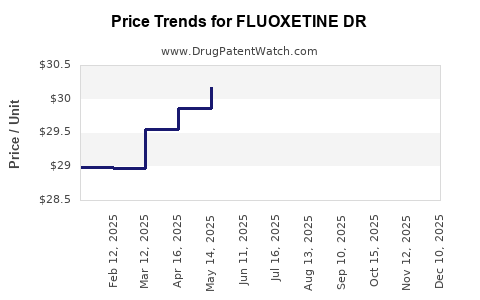Drug Price Trends for FLUOXETINE DR
✉ Email this page to a colleague

Average Pharmacy Cost for FLUOXETINE DR
| Drug Name | NDC | Price/Unit ($) | Unit | Date |
|---|---|---|---|---|
| FLUOXETINE DR 90 MG CAPSULE | 55111-0284-48 | 29.29613 | EACH | 2024-11-20 |
| FLUOXETINE DR 90 MG CAPSULE | 55111-0284-48 | 27.67341 | EACH | 2024-10-23 |
| FLUOXETINE DR 90 MG CAPSULE | 55111-0284-48 | 27.43560 | EACH | 2024-09-18 |
| FLUOXETINE DR 90 MG CAPSULE | 55111-0284-48 | 27.36988 | EACH | 2024-08-21 |
| >Drug Name | >NDC | >Price/Unit ($) | >Unit | >Date |


